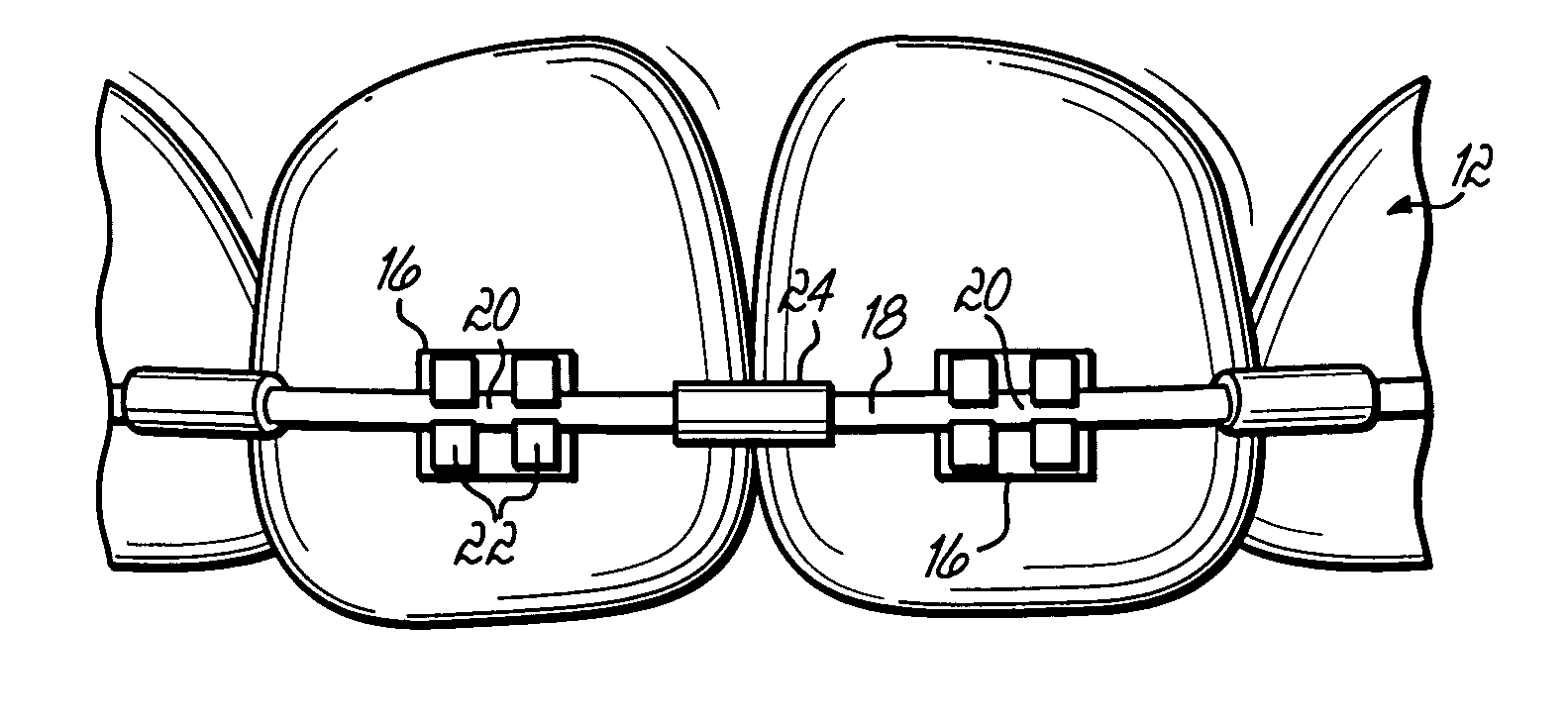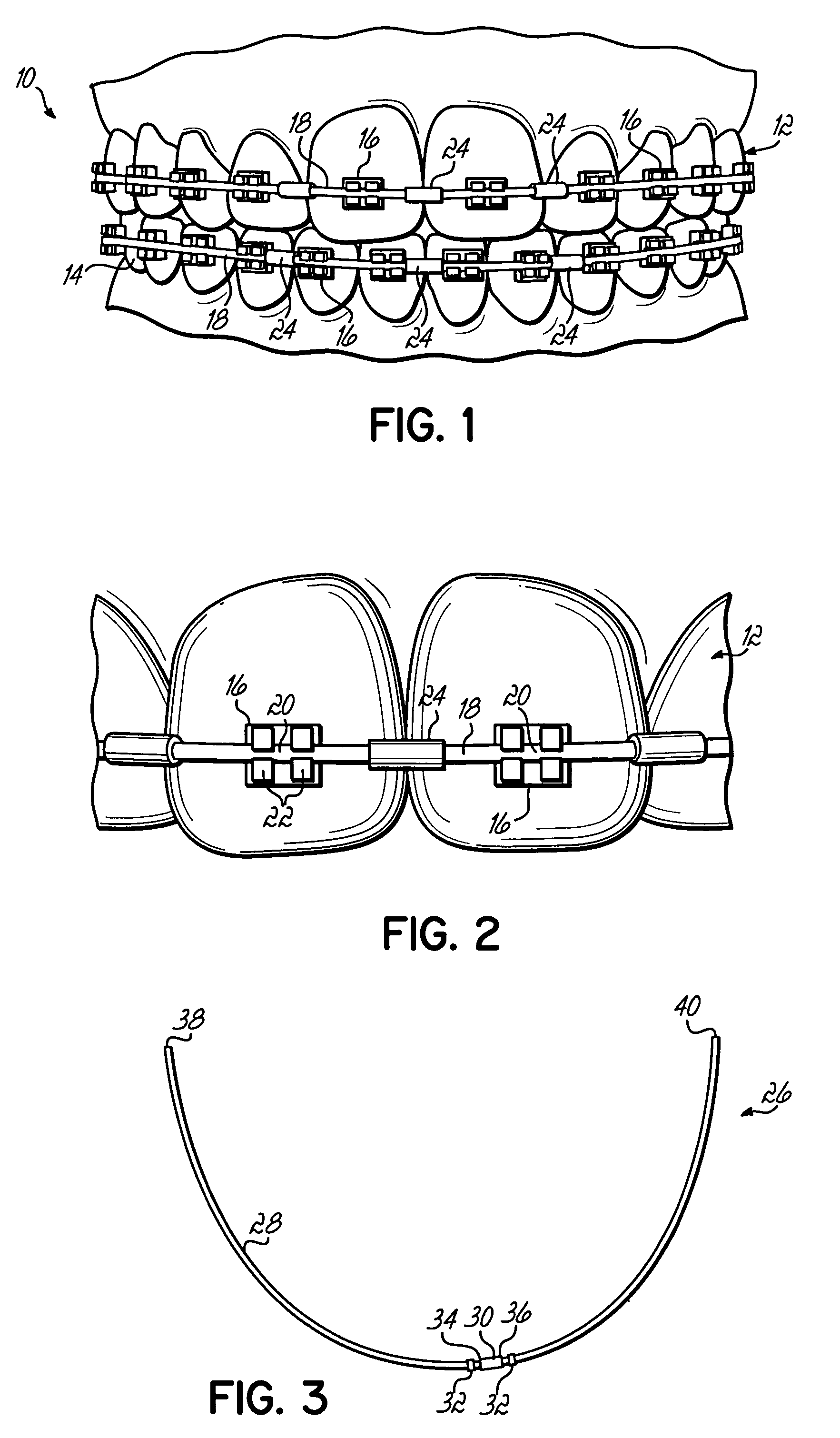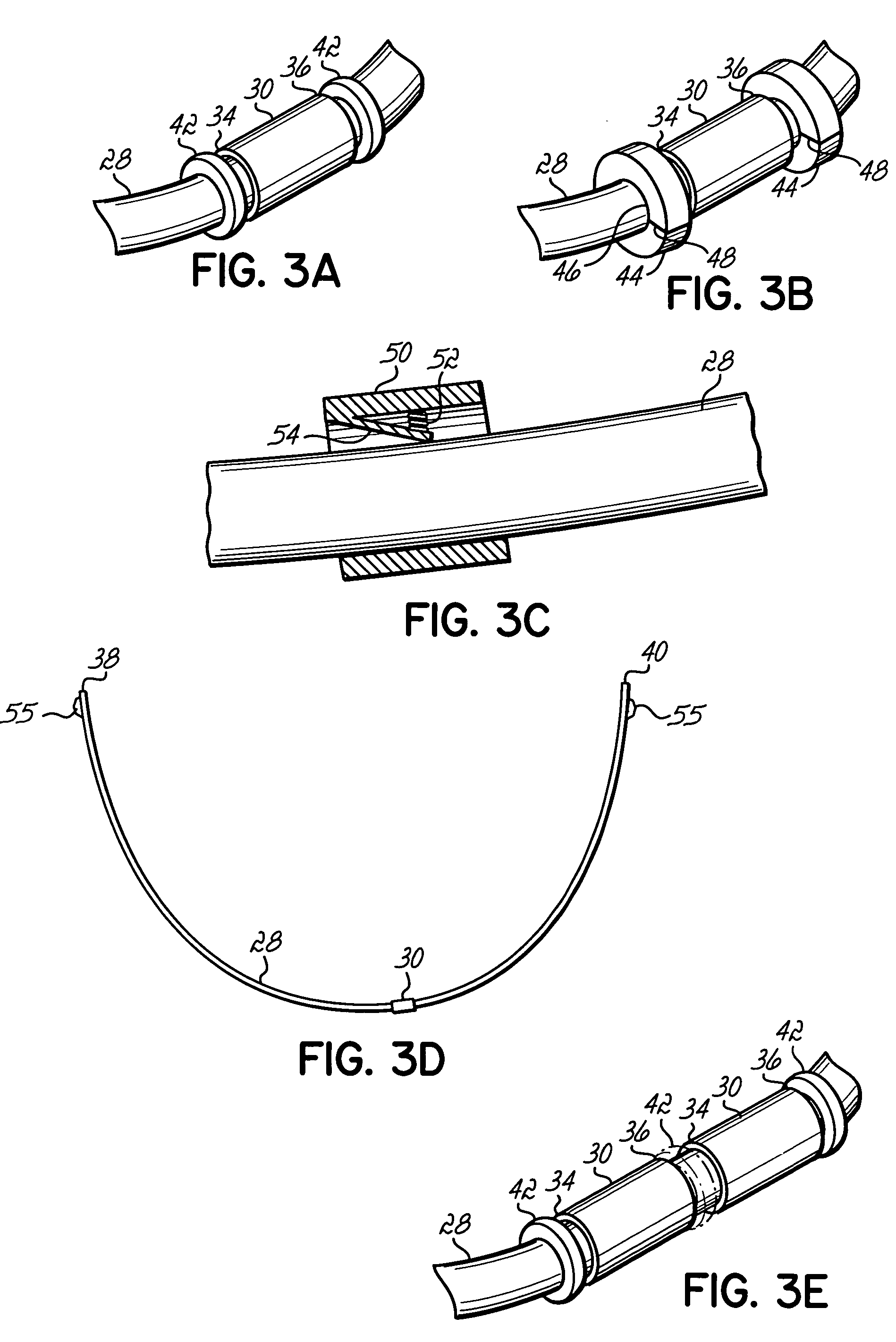Archwire assembly with stops
a technology of archwires and stops, applied in the field of archwires, can solve the problems of time-consuming field assembly process, archwires tend to move mesially-distally, irritation of gums or cheek tissues,
- Summary
- Abstract
- Description
- Claims
- Application Information
AI Technical Summary
Benefits of technology
Problems solved by technology
Method used
Image
Examples
Embodiment Construction
[0026]With reference to FIGS. 1–2, orthodontic braces 10 are provided or applied on the upper teeth 12 and lower teeth 14. The braces 10 generally comprise brackets 16 typically adhered to the upper and lower teeth 12, 14. Archwires 18, which may be formed of NiTi alloys, Ti based alloys or stainless steel, are attached to brackets 16 along archwire slots 20 by, for example, ligature wires or elastic bands 22 or brackets 16 may be self-ligating. Braces 10 further include crimpable sleeves 24 positioned between adjacent brackets 16. Once positioned between adjacent brackets, sleeves 24 are crimped to secure sleeves 24 to the archwire 18 at a fixed position. Sleeves 24 are configured such that sleeves 24 cannot slide past archwire slots 20 of brackets 16 when the archwire 18 moves in a mesial-distal direction. The mesial-distal movement of the archwire 18 is then limited to the distance between adjacent brackets 16. When sleeves 24 contact brackets 16, any further movement of the arch...
PUM
 Login to View More
Login to View More Abstract
Description
Claims
Application Information
 Login to View More
Login to View More - R&D
- Intellectual Property
- Life Sciences
- Materials
- Tech Scout
- Unparalleled Data Quality
- Higher Quality Content
- 60% Fewer Hallucinations
Browse by: Latest US Patents, China's latest patents, Technical Efficacy Thesaurus, Application Domain, Technology Topic, Popular Technical Reports.
© 2025 PatSnap. All rights reserved.Legal|Privacy policy|Modern Slavery Act Transparency Statement|Sitemap|About US| Contact US: help@patsnap.com



